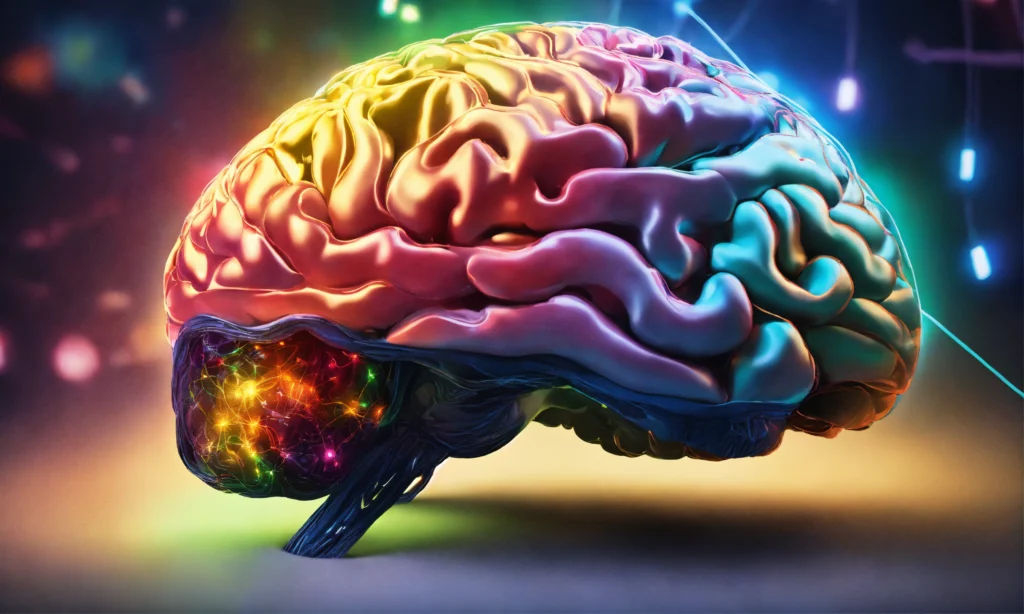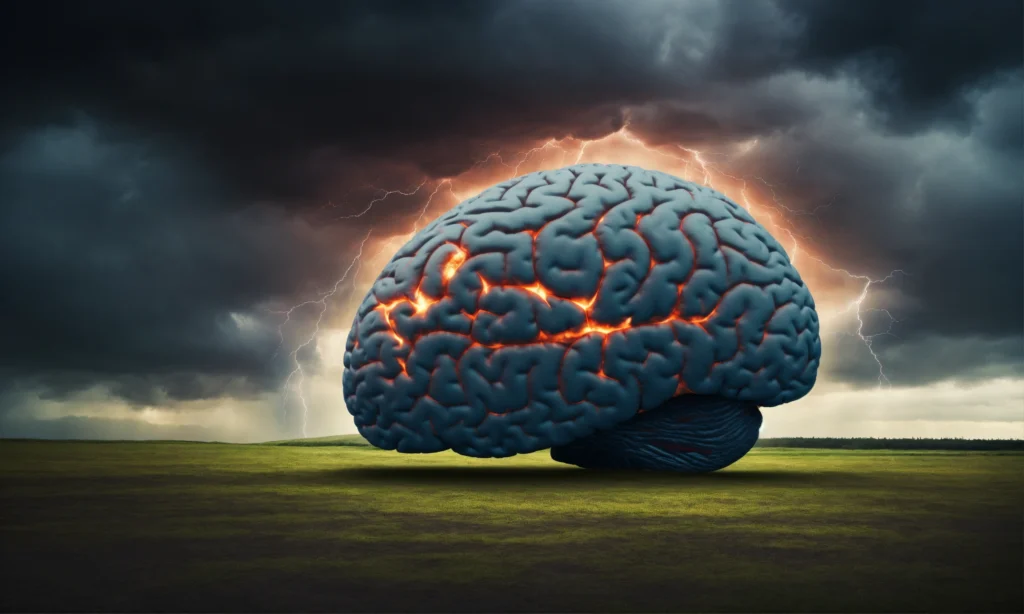Have you ever heard someone described as having a “smooth brain”? 🧠 This peculiar phrase has gained traction in recent years, especially in online communities and social media. But what does it really mean? And more importantly, what are the implications of this intriguing concept?
From internet memes to serious scientific discussions, the term “smooth brain” has sparked curiosity and controversy alike. Whether you’re a neuroscience enthusiast or simply someone who’s stumbled upon this term and wants to know more, understanding the concept of a smooth brain can offer fascinating insights into human cognition and behavior. In this article, we’ll dive deep into the world of brain wrinkles, debunk common myths, and explore how this metaphor has shaped our understanding of intelligence and learning.
Join us as we unravel the mysteries of the smooth brain, from its scientific foundations to its cultural impact. We’ll start by defining what exactly a smooth brain is, explore the science behind those crucial brain wrinkles, and examine the metaphorical implications of the term. Along the way, we’ll bust some popular misconceptions and even discover how to cultivate a “wrinkled brain” mindset for personal growth and cognitive enhancement. Ready to give your brain a workout? Let’s dive in! 🏊♂️🧠

Defining Smooth Brain
A. Origin and popular usage of the term
The term “smooth brain” has gained popularity in recent years, particularly in online communities and social media platforms. Originally, it emerged as a playful insult, implying that someone lacks intelligence or critical thinking skills. The phrase quickly spread across internet forums, memes, and casual conversations, becoming a shorthand for describing perceived simplicity or naivety.
B. Metaphorical vs. literal interpretations
While the term “smooth brain” is primarily used metaphorically, it does have a basis in neuroscience. Here’s a comparison of the two interpretations:
| Aspect | Metaphorical Interpretation | Literal Interpretation |
|---|---|---|
| Meaning | Lack of intelligence or critical thinking | Absence of cortical folding in the brain |
| Context | Casual conversations, internet slang | Medical and scientific discussions |
| Implications | Social judgment, humor | Developmental abnormalities, cognitive impairments |
C. Contrast with “wrinkled brain”
The concept of a “smooth brain” is often contrasted with a “wrinkled brain,” which represents intelligence and cognitive complexity. This comparison draws from the actual structure of the human brain, where increased cortical folding (wrinkles) is associated with higher cognitive function.
- Smooth brain (metaphorical):
- Simplistic thinking
- Lack of critical analysis
- Limited problem-solving skills
- Wrinkled brain (metaphorical):
- Complex thought processes
- Advanced analytical abilities
- Enhanced cognitive flexibility
It’s important to note that while these terms have become popular in casual discourse, they oversimplify the complex nature of human intelligence and brain function. In reality, cognitive abilities are influenced by numerous factors beyond brain structure alone.
Now that we’ve defined the concept of a “smooth brain” and its contrasting counterpart, let’s delve deeper into the actual science behind brain wrinkles and their significance in cognitive function.

The Science Behind Brain Wrinkles
Now that we’ve defined what a smooth brain is, let’s delve into the fascinating science behind brain wrinkles and their importance.
Smooth brain in certain animals
While humans and many mammals have wrinkled brains, some animals naturally have smooth brains. This characteristic is particularly common in smaller mammals and certain reptiles. Here’s a comparison of brain surfaces across different species:
| Species | Brain Surface | Relative Brain Size |
|---|---|---|
| Human | Highly wrinkled | Large |
| Mouse | Smooth | Small |
| Cat | Moderately wrinkled | Medium |
| Lizard | Smooth | Small |
Brain development and cortical folding
Cortical folding, the process that creates brain wrinkles, is a crucial aspect of brain development. This process begins during fetal development and continues into early childhood. Key points about cortical folding include:
- It increases the surface area of the brain without significantly increasing skull size
- The folding process is influenced by genetic factors and environmental stimuli
- Abnormalities in cortical folding can be associated with various neurological disorders
Evolutionary advantages of a wrinkled brain
The evolution of wrinkled brains has provided several advantages to species that possess them:
- Increased cognitive capacity
- Enhanced processing power
- Improved efficiency in neural connections
- Greater specialization of brain regions
Function of brain folds (gyri and sulci)
Brain folds, consisting of ridges (gyri) and grooves (sulci), serve essential functions in brain anatomy and cognitive processes:
- They maximize the brain’s surface area within the limited space of the skull
- Different folds are associated with specific cognitive functions
- The arrangement of folds helps optimize neural connectivity
- Sulci often serve as boundaries between functional brain regions
Understanding the science behind brain wrinkles provides valuable insights into brain anatomy and cognitive function. Next, we’ll explore the metaphorical implications of the term “smooth brain” in popular culture and online discourse.

Implications of “Smooth Brain” as a Metaphor
Now that we understand the science behind brain wrinkles, let’s explore the implications of using “smooth brain” as a metaphor. This term has gained popularity in recent years, particularly in online communities and social media.
Learning and Adaptability
The concept of a “smooth brain” metaphorically represents a lack of adaptability and learning capacity. In contrast, a “wrinkled brain” symbolizes cognitive flexibility and the ability to acquire new skills. This metaphor aligns with the scientific understanding of cortical folding and its relationship to cognitive function.
| Brain Type | Learning Capacity | Adaptability |
|---|---|---|
| Smooth | Limited | Low |
| Wrinkled | Extensive | High |
Social and Cultural Context
The use of “smooth brain” as a metaphor has social and cultural implications:
- Internet culture: Often used in memes and online discussions
- Generational divide: More commonly used by younger generations
- Education: Highlights the importance of lifelong learning
Decision-Making Processes
The smooth brain metaphor extends to decision-making abilities:
- Impulsive choices
- Lack of critical thinking
- Difficulty in problem-solving
- Resistance to new information
Cognitive Abilities and Critical Thinking
The metaphor of a smooth brain versus a wrinkled brain emphasizes the importance of developing cognitive abilities and critical thinking skills. It encourages individuals to:
- Engage in continuous learning
- Challenge existing beliefs
- Analyze information critically
- Develop complex problem-solving skills
By understanding the implications of this metaphor, we can better appreciate the importance of cognitive development and lifelong learning. Next, we’ll address some common myths associated with the concept of a “smooth brain.”

Debunking Smooth Brain Myths
Now that we’ve explored the metaphorical implications of a “smooth brain,” let’s address some common misconceptions about brain structure and function.
A. Individual differences in brain anatomy
While the term “smooth brain” is often used metaphorically, it’s important to understand that individual brain anatomy can vary significantly. Here’s a breakdown of key points:
- Brain size and shape differ among individuals
- Cortical folding patterns are unique, like fingerprints
- Variations in brain structure don’t necessarily indicate cognitive differences
| Brain Feature | Variability | Impact on Function |
|---|---|---|
| Size | High | Limited correlation with intelligence |
| Cortical thickness | Moderate | May affect specific cognitive abilities |
| Folding patterns | High | Influences connectivity but not overall intelligence |
B. Neuroplasticity and brain adaptability
The concept of a “fixed” brain structure is outdated. Neuroplasticity, the brain’s ability to change and adapt, is a crucial factor in cognitive development:
- Synaptic pruning: The brain optimizes neural connections throughout life
- Learning-induced plasticity: New skills can alter brain structure
- Recovery from injury: The brain can rewire itself to compensate for damage
C. Intelligence and brain structure
The relationship between brain structure and intelligence is complex and often misunderstood:
- Multiple factors contribute to cognitive abilities
- Brain efficiency, rather than size or structure, is key
- Functional connectivity plays a significant role in intelligence
Understanding these nuances helps dispel the myth that a “smooth brain” equates to lower intelligence. In reality, cognitive function is the result of intricate neural networks and processes that go far beyond simple structural characteristics.
Next, we’ll explore strategies for cultivating a “wrinkled brain” mindset to enhance cognitive abilities and personal growth.

Cultivating a “Wrinkled Brain” Mindset
The role of diverse experiences in brain development
Exposing yourself to a variety of experiences plays a crucial role in brain development. By engaging in different activities and learning new skills, you stimulate various areas of your brain, promoting neuroplasticity and increasing cognitive function.
Engaging in mentally stimulating activities
To enhance your cognitive abilities, it’s essential to engage in mentally challenging tasks regularly. Here’s a list of activities that can help:
- Solving puzzles and brain teasers
- Learning a new language
- Playing strategy games
- Reading complex literature
- Practicing musical instruments
Developing critical thinking habits
Cultivating critical thinking skills is vital for a “wrinkled brain” mindset. This involves questioning assumptions, analyzing information, and making well-reasoned judgments. Here’s a table comparing critical thinking habits to “smooth brain” tendencies:
| Critical Thinking Habits | “Smooth Brain” Tendencies |
|---|---|
| Questioning information | Accepting information at face value |
| Seeking multiple perspectives | Relying on a single viewpoint |
| Evaluating evidence | Ignoring contradictory evidence |
| Making reasoned decisions | Making impulsive choices |
Embracing lifelong learning
Adopting a mindset of continuous learning is key to maintaining cognitive flexibility. This involves staying curious, seeking out new knowledge, and being open to challenging your existing beliefs and understanding.
Enhancing cognitive skills
Improving your cognitive abilities requires consistent effort and practice. Focus on developing skills such as:
- Memory retention
- Information processing
- Problem-solving
- Creative thinking
- Attention and focus
By incorporating these strategies into your daily life, you can actively work towards developing a “wrinkled brain” mindset, enhancing your cognitive function and adaptability in an ever-changing world.

A smooth brain, while a myth in adults, serves as a powerful metaphor for cognitive inflexibility and limited critical thinking. Understanding the importance of brain wrinkles (cortical folds) in cognitive function highlights the value of continuous learning and mental stimulation. By debunking smooth brain myths, we can appreciate the brain’s remarkable plasticity and capacity for growth throughout our lives.
Embracing a “wrinkled brain” mindset is key to personal and intellectual development. By actively seeking new experiences, challenging our beliefs, and engaging in continuous learning, we can enhance our cognitive abilities and adaptability. Remember, every new skill learned and every perspective gained adds another valuable fold to your brain, making you better equipped to navigate the complexities of our ever-changing world.
more artecils visit site


An interesting topic and I’m glad to come across your page where I found some helpful insights. Check out my website Webemail24 too, if you need additional resources about Dentistry and Orthodontics.
This is quality work regarding the topic! I guess I’ll have to bookmark this page. See my website Seoranko for content about Bitcoin and I hope it gets your seal of approval, too!
I don’t think the title of your article matches the content lol. Just kidding, mainly because I had some doubts after reading the article.
I don’t think the title of your article matches the content lol. Just kidding, mainly because I had some doubts after reading the article.
Thanks for sharing. I read many of your blog posts, cool, your blog is very good.
Thanks for sharing. I read many of your blog posts, cool, your blog is very good. https://accounts.binance.com/ES_la/register?ref=T7KCZASX
Can you be more specific about the content of your enticle? After reading it, I still have some doubts. Hope you can help me. https://accounts.binance.com/es/register-person?ref=T7KCZASX
I don’t think the title of your article matches the content lol. Just kidding, mainly because I had some doubts after reading the article.
I don’t think the title of your article matches the content lol. Just kidding, mainly because I had some doubts after reading the article. https://accounts.binance.com/fr-AF/register?ref=JHQQKNKN
Can you be more specific about the content of your article? After reading it, I still have some doubts. Hope you can help me.
I don’t think the title of your article matches the content lol. Just kidding, mainly because I had some doubts after reading the article.
Your article helped me a lot, is there any more related content? Thanks! https://www.binance.com/en/register?ref=JHQQKNKN
Thanks for sharing. I read many of your blog posts, cool, your blog is very good.
I don’t think the title of your article matches the content lol. Just kidding, mainly because I had some doubts after reading the article.
Thanks for sharing. I read many of your blog posts, cool, your blog is very good.
Can you be more specific about the content of your article? After reading it, I still have some doubts. Hope you can help me.
Thank you for your sharing. I am worried that I lack creative ideas. It is your article that makes me full of hope. Thank you. But, I have a question, can you help me?
I don’t think the title of your article matches the content lol. Just kidding, mainly because I had some doubts after reading the article.
Can you be more specific about the content of your article? After reading it, I still have some doubts. Hope you can help me.
Your point of view caught my eye and was very interesting. Thanks. I have a question for you.
Can you be more specific about the content of your article? After reading it, I still have some doubts. Hope you can help me.
Thank you for your sharing. I am worried that I lack creative ideas. It is your article that makes me full of hope. Thank you. But, I have a question, can you help me?
Thanks for sharing. I read many of your blog posts, cool, your blog is very good.
Your article helped me a lot, is there any more related content? Thanks!
Your point of view caught my eye and was very interesting. Thanks. I have a question for you.
Your article helped me a lot, is there any more related content? Thanks!
Thanks for sharing. I read many of your blog posts, cool, your blog is very good.
Can you be more specific about the content of your article? After reading it, I still have some doubts. Hope you can help me.
Your article helped me a lot, is there any more related content? Thanks!
Thank you for your sharing. I am worried that I lack creative ideas. It is your article that makes me full of hope. Thank you. But, I have a question, can you help me?
Thanks for sharing. I read many of your blog posts, cool, your blog is very good.
Thanks for sharing. I read many of your blog posts, cool, your blog is very good.
Can you be more specific about the content of your article? After reading it, I still have some doubts. Hope you can help me.
Can you be more specific about the content of your article? After reading it, I still have some doubts. Hope you can help me.
Your article helped me a lot, is there any more related content? Thanks!
Your article helped me a lot, is there any more related content? Thanks!
Can you be more specific about the content of your article? After reading it, I still have some doubts. Hope you can help me.
Can you be more specific about the content of your article? After reading it, I still have some doubts. Hope you can help me.
Your point of view caught my eye and was very interesting. Thanks. I have a question for you.
Your article helped me a lot, is there any more related content? Thanks!
Your point of view caught my eye and was very interesting. Thanks. I have a question for you.
Your article helped me a lot, is there any more related content? Thanks! https://www.binance.com/join?ref=P9L9FQKY
Your article helped me a lot, is there any more related content? Thanks! https://www.binance.com/ur/register?ref=WTOZ531Y
Thanks for sharing. I read many of your blog posts, cool, your blog is very good.
Thank you for your sharing. I am worried that I lack creative ideas. It is your article that makes me full of hope. Thank you. But, I have a question, can you help me? https://www.binance.com/en-ZA/register?ref=JHQQKNKN
Your article helped me a lot, is there any more related content? Thanks!
Can you be more specific about the content of your article? After reading it, I still have some doubts. Hope you can help me. https://accounts.binance.com/uk-UA/register?ref=W0BCQMF1
Thanks for sharing. I read many of your blog posts, cool, your blog is very good.
Your point of view caught my eye and was very interesting. Thanks. I have a question for you. https://accounts.binance.com/en-IN/register?ref=UM6SMJM3
Thanks for sharing. I read many of your blog posts, cool, your blog is very good. https://accounts.binance.com/tr/register?ref=W0BCQMF1
I don’t think the title of your article matches the content lol. Just kidding, mainly because I had some doubts after reading the article.